Oklahoma is home to a wide variety of critters. Snakes are well-represented in the area and can be found distributed throughout the entire state! With this, the diversity of snakes within Oklahoma is also astounding. Harmless, cute, friendly, venomous, and small; the snake communities in Oklahoma represent all.
11 Snakes found in Oklahoma
Keeping in mind that Oklahoma is snake-central, what are the most common species that can be found? Today, we will answer the big question of the day: What snakes are found in Oklahoma?
Timber Rattlesnakes

Photo Credit: Shutterstock
Let’s kick off this list with a common yet venomous species! Timber rattlesnakes are large pit vipers known for having velvety rattles that appear smooth or even soft. They have keeled scales, meaning they have a rougher feeling and appearance.
They are tan or light brown, with dark black bands going down the length of their body. During the winter, they hibernate in dens, usually hidden from view. In contrast, they soak in all the sun they can get during the summer, opting to bask on rocks and near their dens!
Scarlet Snake
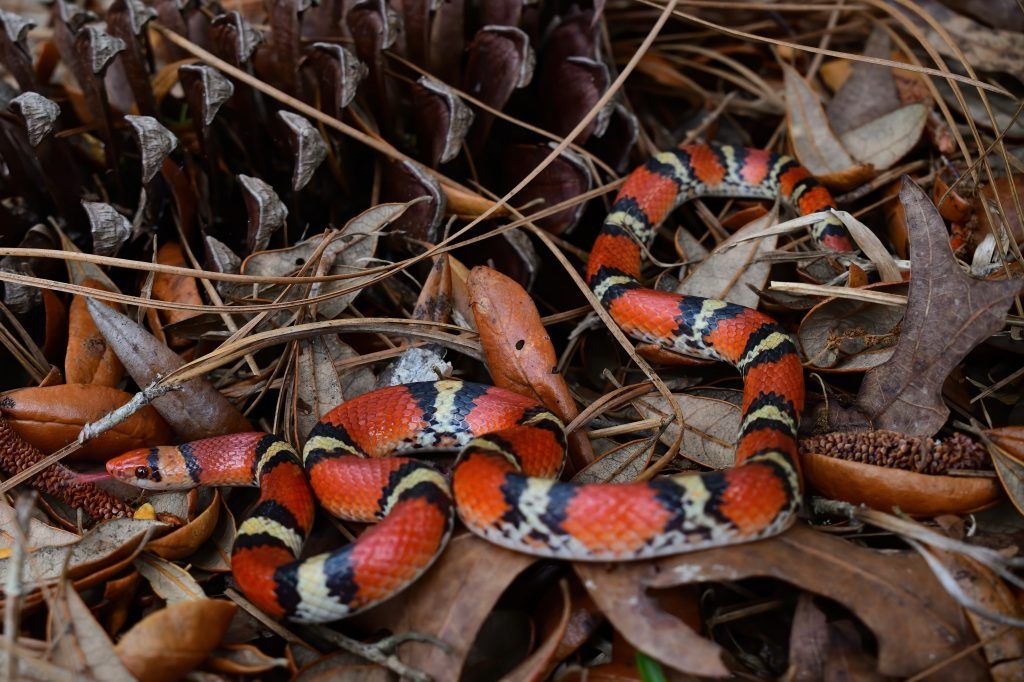
Photo Credit: Shutterstock
Moving on to a less dangerous species, scarlet snakes are a rather harmless addition to this list. They have a gorgeous red coloration, with a white underbelly and a distinct red nose and head. Due to their appearance, scarlet snakes are commonly mistaken for other red snakes, such as milk snakes.
They are non-venomous and focus on eating smaller prey such as lizards and eggs. Additionally, they are nocturnal and have been described as very secretive. Likewise, they spend a lot of time hidden under debris or hiding on the forest floor.
Texas Coral Snake
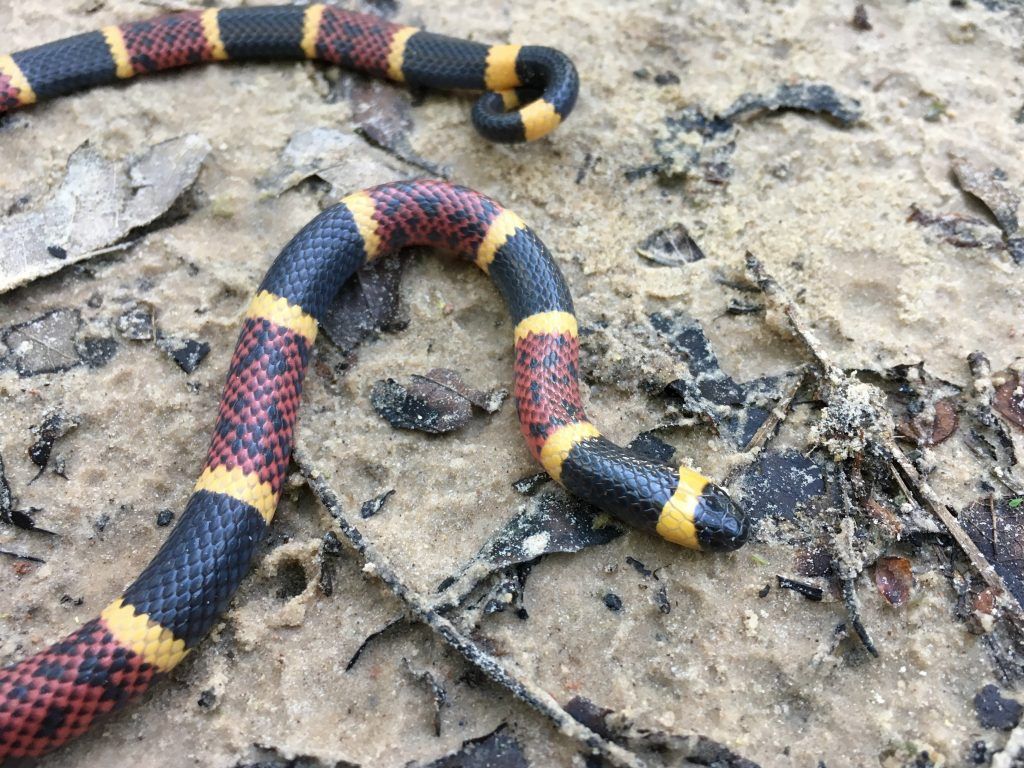
Photo Credit: Shutterstock
The Texas coral snake is a rare find in Oklahoma, but they are occasionally seen in the southern part of the state near the border. They can grow up to three feet long and have conspicuous black, red, and yellow bands that span the length of their body. Like many other snakes on this list, their unique coloration is shared by a few other snakes, such as milk snakes and scarlet snakes, which can make identification difficult.
With that said, understanding what coral snakes look like is important! Coral snake look-alikes may be harmless, but misidentifying a coral snake can be deadly.
For decades, the popular rhyme “Red-on-yellow, kill a fellow, red-on-black, friend of Jack” has helped people distinguish coral snakes from look-alikes. While this rhyme is accurate most of the time, it is not 100% reliable.
Coral snakes have sharp fangs and are known to take a few bites when they inject their venom. Coral snake venom is a neurotoxin that often causes no pain or swelling, but causes various other symptoms in humans, from euphoria and drowsiness to labored breathing and paralysis. If you are bitten by a coral snake, it is important to seek medical attention fast!
Copperhead Snake
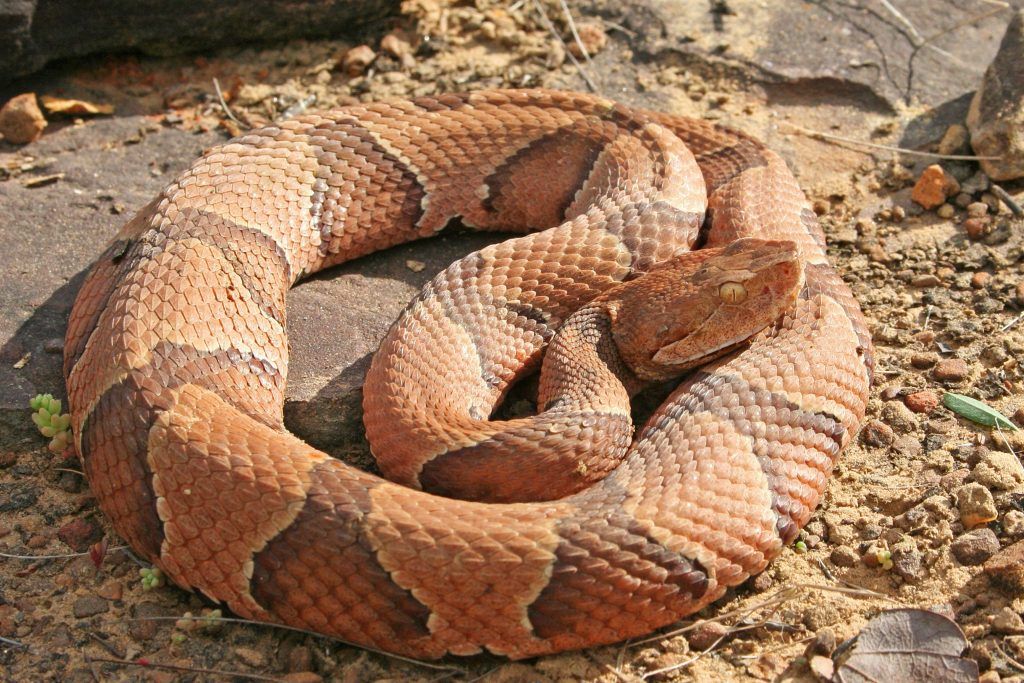
Photo Credit: Shutterstock
Another infamous snake that can be found in Oklahoma is the copperhead snake. They are venomous and heavy-bodied. They also have big diamond-shaped heads, which makes them fairly easy to identify. Additionally, they have elliptical eyes, which appear as vertical slits.
Copperhead snakes have a tan body with dark brown hourglass-shaped stripes. Like many other snakes, they can be found basking on rocks or locks during warm days. You may also see them coiled up in an “ambush posture” which is used when they are waiting for prey to walk by.
Young copperhead snakes have bright green tails that are used to attract smaller prey such as frogs. Their venom is not very potent, but their bites can still cause a great deal of pain!
Cottonmouth Snake
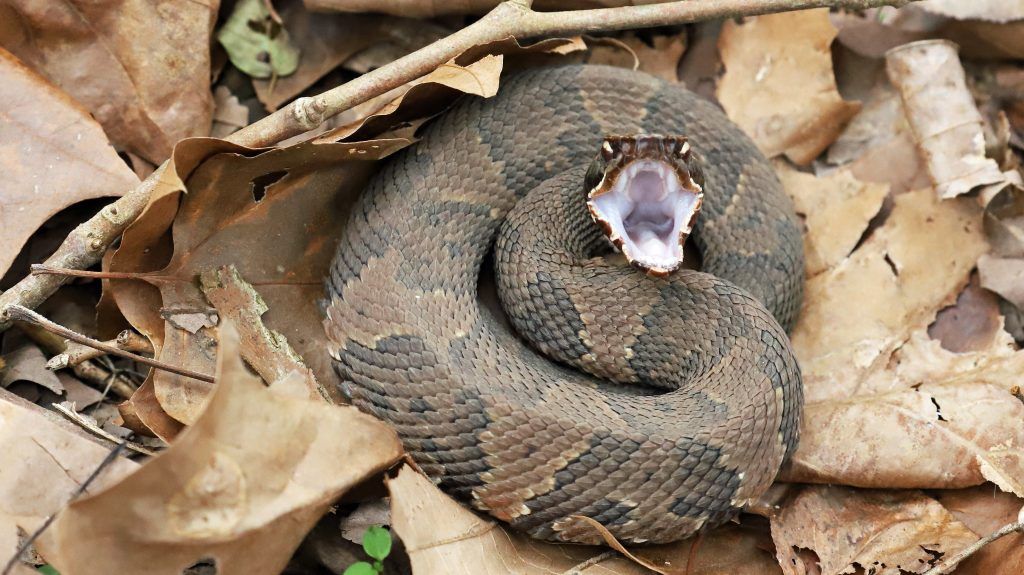
Photo Credit: Shutterstock
Cottonmouth snakes are yet again a common species, found throughout much of the U.S. They have dark olive or brown colored skin with black or brown stripes going along their body. Compared to other snakes on this list, the cottonmouth snake tends to have a darker-colored body overall. They are known to be “cottonmouth” snakes because the inside of their mouth is a pure white color!
They are also known to be semi-aquatic, preferring to stay near bodies of water such as lakes, rivers, and streams. They employ a variety of different feeding tactics, such as ambushing, chasing, and lying in wait. Cottonmouth snakes are opportunistic, relying on whatever food is available to them at a given time. Their venom has a similar potency to copperhead snakes.
Western Diamondback Rattlesnake

Photo Credit: Shutterstock
Moving on to a scarier snake, the Western diamondback rattlesnake is truly one to look out for. It packs a heck of a bite, one that is typically considered an immediate medical emergency. The snake has tan or gray skin with dark diamond patterns along the back. They also have a large rattle that is used to warn other animals that are infringing on their territory.
As a predator, Western diamondback rattlesnakes are nocturnal hunters. They use special organs, known as pit organs, to sense heat in dark environments. They also have a striped tail that is conspicuous and often described as looking “raccoon-like.”
Western Rat Snake
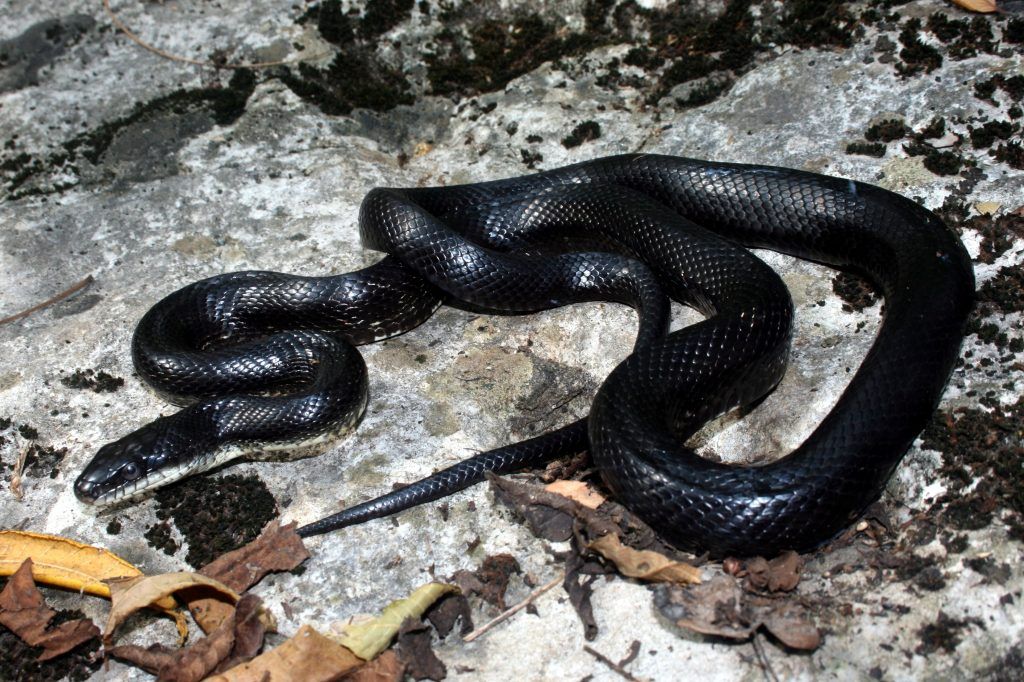
Photo Credit: Shutterstock
Western rat snakes are extremely common and can be found in many states throughout the U.S. They have pale tan skin with large dark black and brown patterns overlaying the length of their back. They can grow fairly long, maxing out at around three feet. They are non-venomous and employ a lot of various defense strategies. For instance, they use rattle mimicry to make themselves appear like a rattlesnake, musking, and coiling. Don’t worry too much if you see these, but note that they will bite if provoked.
Rough Green Snake
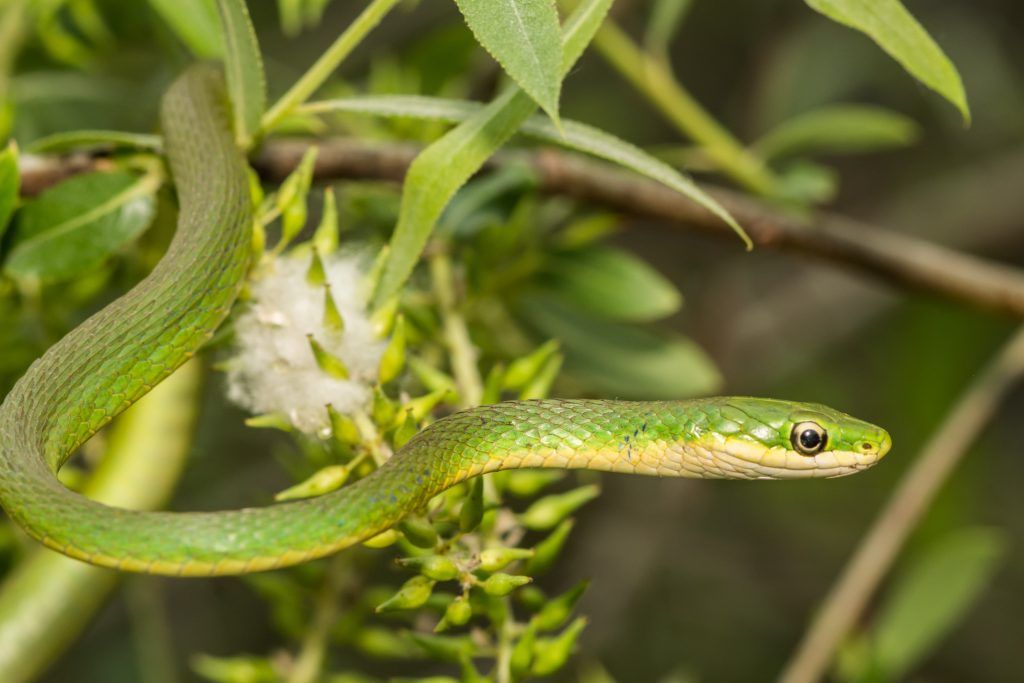
Photo Credit: Shutterstock
One of the cuter snakes on this list is the rough green snake. These snakes are very slender and skinny, with a bright green back and a pale yellow underside. They are purely arboreal, meaning they prefer to live and climb around in trees. Their coloration allows them to blend in with leaves and other fresh vegetation perfectly.
They are small prey hunters, sticking to eating small invertebrates such as spiders and other insects. They may come down to the ground to hide in cooler weather, although that is typically less common.
Glossy Snakes
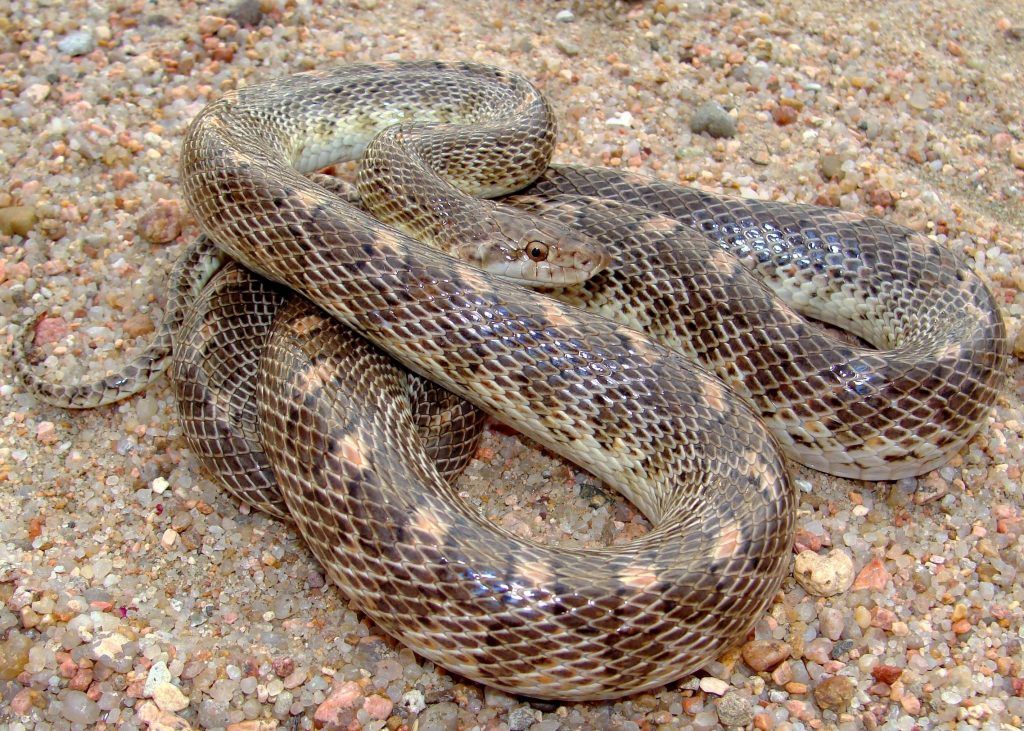
Photo Credit: Shutterstock
Glossy snakes are truly beautiful snakes that can be found in Oklahoma. They have a tan back with light brown splotches along the length of their body. Additionally, they have a stark white underbelly. What makes them especially unique is their smooth scales, giving them a glossy and smooth appearance.
Don’t worry too much if you see these snakes in the wild. They are considered harmless and are a non-venomous species. In nature, you can find these snakes lurking in dry, open, and sandy areas. Due to their coloration, they blend in extremely well with dry vegetation and soils. They typically feed on lizards and small rodents, killing prey through constriction.
Ring-Necked Snakes
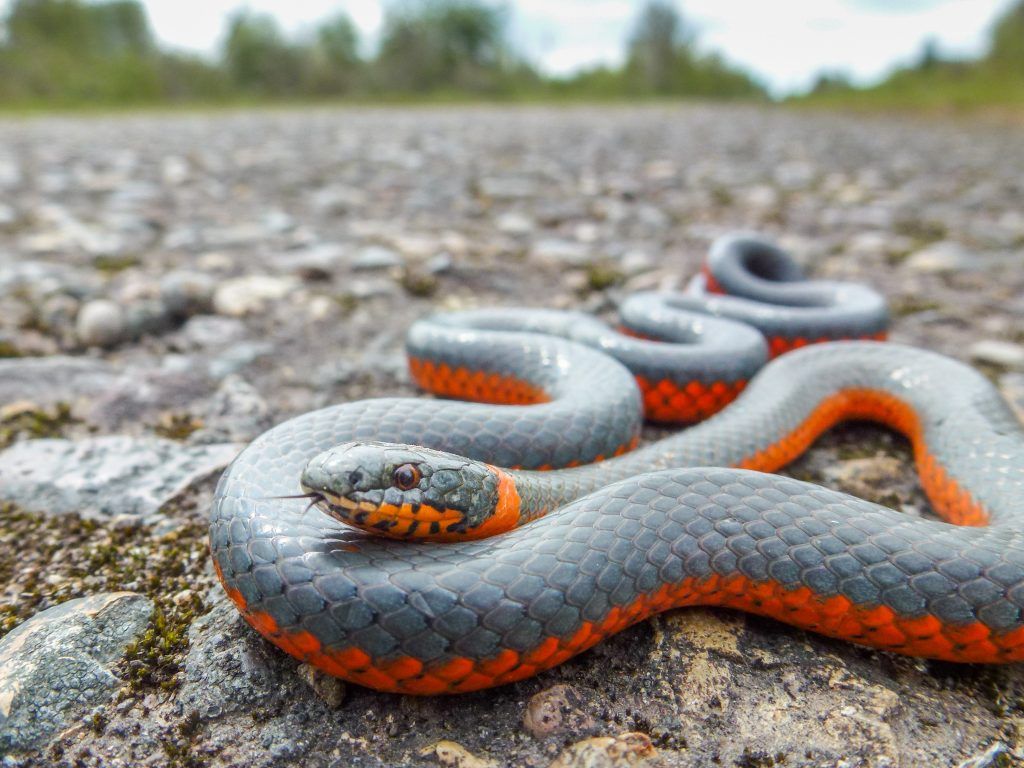
Photo Credit: Shutterstock
Ring-necked snakes are beautifully unique, with bold yet subdued coloration. They are a dark olive/black color on their back, with a vibrant orange-red underbelly. Their underbelly connects to form a ring of bright orange around their whole neck.
These snakes only grow to around 10-14 inches in length. They are distributed in almost every terrestrial habitat type in Oklahoma. Like many other snakes, you may see ring-necked snakes basking on warm rocks and locks during hot Spring or Summer days.
Rough Earth Snakes
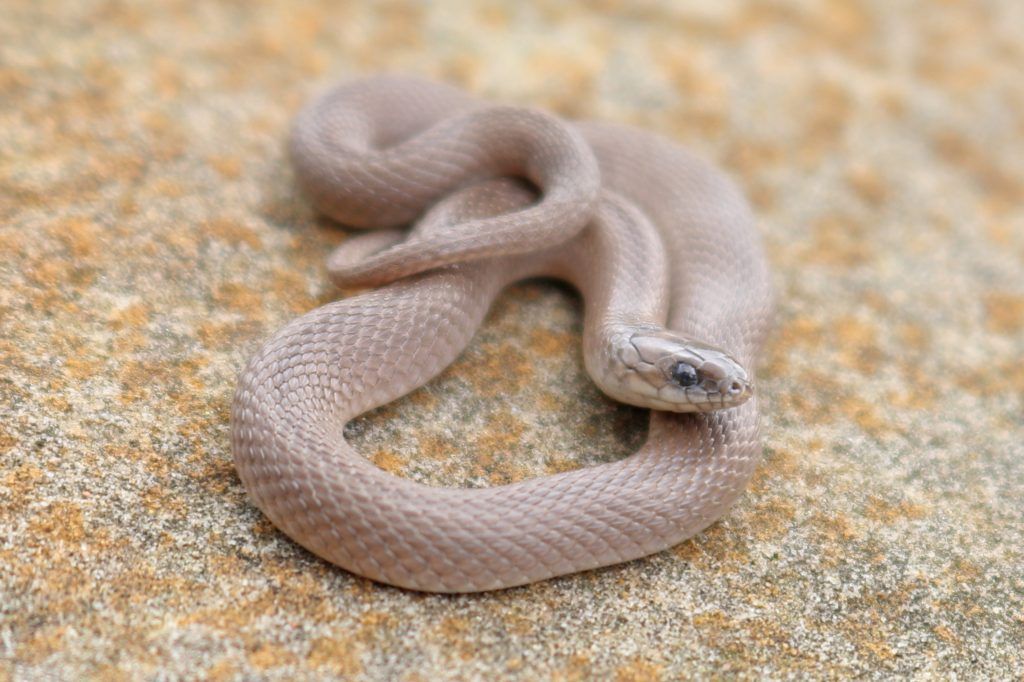
Photo Credit: Shutterstock
One last snake to add to this list is the rough earth snake. They are entirely brown/black in coloration, with a very matte appearance. They have a pointed snout and an overall uniform body. Juveniles often have a lighter band around their neck, which can mistake them for a ring-necked snake.
Rough earth snakes are fossorial, meaning they spend a lot of time underground or hiding beneath debris such as leaf litter and logs. They are a very small species and primarily eat small invertebrates such as earthworms. Interestingly enough, they give live birth, with female snakes birthing as many as ten young each summer!
























